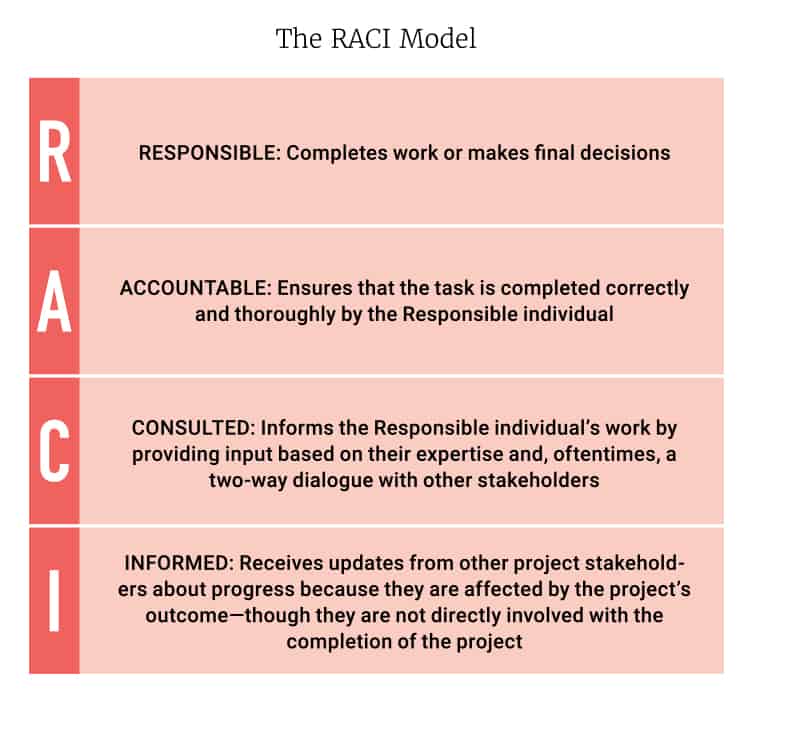As a product manager, you know what it’s like to operate in a randomized mode. Every day you’re pulled in multiple directions and asked to meet tactical needs and demands from all corners of the business. And when deals are on the line, every request is urgent.
Every time you’re asked to address these demands, it interrupts your ability to be intentional, thoughtful, and measured in the management of a product’s life cycle. It’s a lot of pressure, and it’s often difficult to handle. Furthermore, in an environment of constant organizational demands, it’s challenging to effectively communicate with stakeholders. Continual changes and moving targets make it hard to share updates and progress while also focusing on the strategic work you need to do to keep the wheels moving.
You can overcome this, though, by harnessing storytelling for product-related communication to free valuable time for your high-priority responsibilities.
The Challenges
To do your job effectively, you must uncover your customers’ known and unknown wants and needs so you can join them on their journey and then shape it for the better. When you can anticipate your buyers’ needs—when you understand their stories—you can shape your products and the entire customer experience to delight them. You’re also able to tell stories to your customers that make sense. Knowing how to get to know the customer is rarely a product manager’s greatest challenge. Rather, internal demands for white papers, datasheets, sales presentations and more rob you of valuable customer research time.
Saying “no” to requests from skeptical leaders and vociferous salespeople can be hard, and you may not know how to shape the dialogue within your organization to explain your priorities.
This uncertainty and pressure cause stress that forces many product professionals to flee the organization for greener pastures—80% of respondents to Pragmatic Institute’s 2019 Annual Product Management and Product Marketing Surveyhave only been in their current role for four years or fewer. Of course, even when product managers move to a new company, many of them fall into the same cycle all over again.
A focused, productive product manager is critical to an organization’s overall health. Just like airplane safety videos instructing you to put your own oxygen mask on before helping others, you must address your own needs and priorities if you hope to help your organization grow and best serve its customers.
Storytelling can help. The best way to shape an organization’s internal and external dialogue is by telling stories that articulate the transformation you seek to bring to your customers. Do this, and you’ll spark a transformation within the company’s culture.
From Random to Strategic
Despite the constant stream of demands levied on you, you can’t do it all. You can’t launch, manage and sunset products and conduct thoughtful customer research and analysis and handle every single request from your colleagues. But you can do something.
When you make a small, upfront time investment to prioritize, you can identify and attack the most important tasks from each of these buckets. With a clear strategy and plan—in this case, a story framework to streamline your communications and messaging—you ultimately become more efficient and productive.
Consider the world-renowned Louvre museum in Paris, which boasts more than 300,000 works of art and historical artifacts. By some estimates, it would take 100-plus nonstop days at just 30 seconds each to see everything. No one can do it all. However, those who take time to do even a little research on the stories of time periods, artifacts, or artists they want to see have a much more enjoyable experience than those who just stop by and randomly look around.
Like a time-crunched tourist, you need to approach product life-cycle management with a plan. Embrace the concepts of agile project management so you can take your whole team on a shared journey, working together to craft compelling, engaging narratives and stories around your organization’s products.
There’s no way around it; you need to demand that time and space to craft intentional actions that will make your job easier and more efficient. The good news is, you can position your request in a way that resonates with your colleagues.
The 3 D’s of Storytelling
I often rely on a storytelling framework I call the 3 D’s. Applicable to practically any narrative, the 3 D’s will help you determine the structure, sequence, and content of your story.
- Desire: This is the thing—tangible or abstract—that your story’s hero wants most. It’s an explicit, expressed desire to obtain or achieve something. It is known to the hero, and you demonstrate empathy and understanding by highlighting it in your story.
- Difficulty: Every story has an obstacle or challenge your hero must overcome to get to where they want to be. It can be anything—a set of circumstances, a lack of skills, a specific person—and it stands between your hero and his or her desire.
- Denouement: French for “conclusion” or “unraveling the knot,” denouement often is used in reference to novels, plays, and films. In your stories, the denouement should provide a clear solution to the hero’s difficulty. What transformation do they go through? Who or what helps them along the way? Ultimately, this part of the story should paint a picture of your hero’s life cycle once they’ve achieved their desired outcome.
For product professionals, this is about putting your customer at the center of the story. The 3 D’s relate to what customers want (desire), what stands in their way (difficulty), and how your products can unpick the knot to help them reach their goals (denouement). By creating an easy-to-read, one- or two-page product life-cycle narrative, you
- Build a bridge between customers and individual team members, providing the visibility, access, and empathy required to meet customers’ needs
- Position yourself as a curator of both internal and external requests—a matchmaker of ideas and stories who helps everyone see, feel and experience a new normal that you want to create for customers
- Ensure that every stakeholder takes ownership and responsibility for their role as a supporting cast member in the customer’s story
A product life-cycle narrative is an organization’s contract with itself. It’s a repeatable, scalable template that provides order and routine to your team’s various lifecycle management tasks. And you can create your own product life-cycle narrative in just three steps.
Step 1: Identify the Guides for Your Hero/Customer
Every good story has a wise, intelligent character who plays a pivotal role in guiding the hero toward their desired end state. Obi-Wan Kenobi initiated Luke Skywalker’s Jedi training. High-tech KITT helped Michael Knight fight crime. Rafiki showed Simba his destiny of reclaiming the Pride Lands. Your company’s products or services help its heroes—your customers—solve their problems and achieve their goals.
It’s important to clearly define these guide roles within your pool of product life-cycle stakeholders. Determine who should be involved, when they are involved, and how they are involved. This is a good opportunity to use the RACI model.
After identifying each guide/stakeholder’s role, write down their individual 3 D’s within their role. Consider what these guides want (desire), the challenges of their roles (difficulty), and your shared solution and outcomes (denouement).
Step 2: Craft the Story of Your Project
Create a narrative around your stakeholders’ involvement as the customer’s guide in their product journey. It shows your team members when and how they fit into not only your work but the larger product life cycle.
When creating the narrative, repeat the same keywords and terminology to reinforce your point and your stakeholders’ learning. Leverage your customer personas to focus each story and keep them all relatable.
Alfred Hitchcock said, “A good story is life with all the dull parts taken out.” Heed these words by including anecdotes and quotes from successful internal or external stories that keep your stakeholders focused on the bigger picture. Clearly define the steps in the process and clarify your stakeholders’ opportunity to provide input. Finally, keep the story brief (one or two pages), but make sure it covers the beginning, middle, and end of your hero’s transformation—the 3 D’s.
Step 3: Invite Stakeholders on the Journey
Use the stories you’ve created to take your stakeholders on a journey through the project, remembering to walk them through the 3 D’s. Be transparent with data-driven decisions and share the “why” of market stories. As you tell your stories, get feedback from stakeholders, listen to questions and weave answers into your work.
As you capture feedback from your customer heroes, commit to prioritizing future requests based on the stories the market tells you. Share these stories internally to ensure you and your stakeholders are on the same page and share the same vision of success. When this happens, you’ll be able to celebrate wins together and collaborate more efficiently and effectively on future product life cycles.
Become a Champion
Regardless of the product, you can’t design and manage a life cycle without giving yourself the time and space to understand the stories involved. How can we shape a customer’s story if we don’t first understand the story they’re living in today? As product professionals, we must listen to our stakeholder’s stories, understand them and then respond. If we don’t, the ideas and communication we share won’t be rooted in reality and won’t resonate with our stakeholders’ true experiences.
It’s our responsibility to set the guardrails for this journey. When we respect our customers’ and stakeholders’ desires and difficulties, we become laser-focused on the process and outcomes that matter most. We connect with the real world and real customers to drive transformation.
When you share your product life-cycle narrative within your organization, use the moment to paint a vision for a future state in which the customer’s voice is heard, data is used, and the team’s intelligence is harnessed and respected. When you take this approach, you become a linchpin in your organization—a champion for your stakeholders, your customers, and the market. You also create space to plan and be intentional while still having time to create those important deliverables the organization needs.
Your stories will also help you identify when requests don’t fit into your narratives. This will serve as your north star when choosing priorities, and it will empower you to say “no” when something doesn’t advance the shared team journey.
It takes time and intention to step back, identify and tell stories that communicate the market and organization’s intent. Moreover, it’s challenging to do all of this while also attending to everything required to effectively launch a new product, service an existing one, and sunset another. However, if we don’t take the time, we’ll always be tackling task after task for siloed departments that don’t have a shared “why.” If we can’t be intentional, we can’t take care of ourselves enough to do our jobs well.
Learn More
Certification Courses
- Foundations: Uncover the Secrets of Creating a Market-Driven Organization
- Build: Create Remarkable Products: Because Having a Plan Is Not the Same as Having a Product
- Market: Drive Revenue Growth, Customer Acquisition and Brand Awareness
Articles
- Go Soft: How to Get Ahead in Product Management
- Stories Still Matter: Communicating in a Crowded Marketing World
Author
-

Matthew Woodget is the founder, CEO and principal strategy consultant at Go Narrative. Follow him on Twitter or connect with him on LinkedIn.









